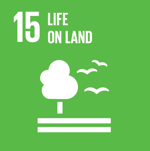Coffee Berry Borer
 Panama
Panama
 Honduras
Honduras
 Nicaragua
Nicaragua
Executive Summary
Pests affect the yields and quality of coffee, the Coffea canephora species -known as Robusta or lowland coffee- is no an exception. Coffee Berry Borer (Hypothenemus hampei), a significant pest, is favored by variations in precipitation and temperature and poor agronomic management.
In Panama, with a cultivated area of 19,000 hectares of both Coffea arabica and Coffea canephora, the borer was detected in 2005 and has spread throughout the country, causing losses of up to 80% of the grain. In Honduras, where about 265,751 ha are cultivated, the borer was detected in 1977 and in Nicaragua with an area of 153,186 ha, in 1988. In all cases coffee production tends to be dominated by small and medium producers with a very low level of technology.
The purpose of the project is to reduce economic damage by identifying technical limitations in production systems, analyzing climatic variations, proposing the Integrated Management of the Borer (IMB) as well as adjustments to improve the effectiveness of current strategies.
Climatic conditions affect the behavior of the pest: with less precipitation, the borer is dispersed and as of the month of June higher percentages of infestation are recorded. With the knowledge generated, IMB is feasible and desirable, it includes both manual and biological control as well as better agronomic practices.
Results
The project generated results in four dimensions:
- Monitoring: Coffee beans that remain in the soil or in the plant after harvesting allow the insect to proliferate and infest new beans. Climatic alterations such as late rains and early harvests contribute to the maintenance of pest cycles.
- Climatic characterization: High temperatures favor the multiplication of the insect, shorten its cycle and boost its migration towards new crops. A worrying element is that the borer is adapting well to highland conditions (San Jerónimo, Honduras at 1440 masl) with infestations of up to 5% in Arabica coffee.
- Characterization of productive systems: Production tends to be dominated by small-scale farmers, with a high incidence of poverty, low technology and low schooling. These conditions make it difficult to handle and control the pest.
- Implementation of management and control practices: The modifications that the project successfully introduced are based on the elimination of fallen and remnant grains, the use of handmade traps, and the use of predators and parasites such as Cephalonia stephanoderis and fungi such as Beauveria bassiana, plus a very strong effort In training.
Beneficiaries
The project had significant achievements training, under different means, a total of 3,440 producers. Additionally, it was able to incorporate a total of 218 new producers to coffee cultivation in Panama. In sum, the direct final beneficiaries have been 3,658.
There is no precise account of potential or indirect beneficiaries, but they will undoubtedly be many more than the direct ones.
Sustainable Development Goals




Participating Organizations
Executor
- Instituto de Innovación Agropecuaria de Panamá (IDIAP) - Panamá
Co-executor
- Dirección de Ciencia y Tecnología Agropecuaria (DICTA) - Honduras
- Instituto Nicaragüense de Tecnología Agropecuaria (INTA) - Nicaragua
Graphics and data
Financing by country (in USD)




































